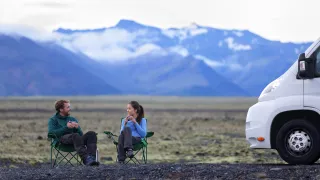The coronavirus pandemic has changed consumer behaviour, and the effects of this long-drawn-out crisis are likely to extend far into the future. The pandemic has accelerated existing trends and created new routines and habits in peoples’ everyday lives. Read on to learn the essential consumer behavior trends for 2022 to ensure being relevant to customers after the pandemic.
VTT has kept a close eye on the change in consumer behaviour throughout the pandemic. Right at the beginning of the crisis, we predicted a change in consumption in the leading national newspaper Helsingin Sanomat. Last autumn, we followed the lifestyles of 27 Finns for three months during the pandemic and identified four change trends in our lifestyles. International research on consumer behaviour has been carried out widely during the coronavirus pandemic.
The global economy is recovering thanks to the progress of vaccinations, the lifting of restrictions and intensive recovery measures. Although the pandemic is not over and there are many uncertainties on the horizon, this is a good time to look at consumer behaviour trends for the upcoming year.
Wanting space promotes hiking and driving
During the pandemic we have become used to maintaining safe distances, having fewer people around and making contactless payments - just to name a few changes. We increasingly want to use private means to get around, which is demonstrated by a rise in car sales. In our spare time we turn to hiking and cabins to have some time for ourselves.
Finland has seen a rise in van life – travelling in a DIY-modified van – a global trend that combines many of the above-mentioned consumer needs. We can expect these kinds of individualistic trends to keep going strong: people have found these lifestyle changes meaningful, they involve big investments, and keeping your distance not only protects you from the coronavirus but other communicable diseases as well.
A more flexible lifestyle changes the pace of everyday life
Throughout the pandemic, surveys have indicated that employees and employers are largely satisfied with the increase in remote work. At the same time, working from home has started to lose its charm as the pandemic drags on. Especially young people have experienced mental issues due to studying remotely.
In the future, different hybrid models will become more common, combining working from home and the office. This will impact what everyday life will look like for us also as consumers; where we want to live and what features we expect to have at home. Consumers are expected to continue dressing in more relaxed styles, enjoying increasingly snack-type meals.
The role of time, space and location will become more versatile: we will continue to do many of the same things we are used to – but we do these in our in own schedules and according to our individual preferences (WGSN 2021). New business opportunities will open related to home office furnishings, mobility solutions and restructuring companies’ offices, amongst others.
Clear products and services help navigate the sea of well-being trends
The pandemic has forced us to look at our own health from new perspectives. Having face a completely new type of threat, health has become an increasingly visible and concrete topic. We can witness many indirect health effects: some have been motivated to take up sports and new hobbies while others have become passive and stayed at home. Mental health challenges have increased especially amongst those living alone. At the same time, the market for various wellness products and services has continued to grow, offering everything from state-of-the-art self-measurement devices to ayahuasca retreats.
Brands have to offer consumers clear products and services to keep up with our new-found interest in well-being. Instead of easy solutions and treating superficial symptoms, we want more fundamental ways of improving our overall health (Euromonitor 2021).
Clearer division of roles between e-commerce and brick-and-mortar stores
The pandemic has accelerated digitalisation in all aspects of life, the growth of online shopping being one of the most significant examples. At the global level, e-commerce is expected to grow from the current 19.5% of total retail sales to 21.8% by 2024 (Statista 2021).
This shows that the role of physical stores is still significant - but more and more investments in the shopping experience and its interactive aspect are expected, such as various in-store service concepts. According to a new study, consumers who appreciate a brand’s “cultural richness” prefer to visit brick-and-mortar stores rather than online ones.
Doing your part to save the world
We are living in times of several parallel, complex and systemic crises. Alongside the pandemic, we are seeing more and more concrete impacts of climate change, species extinction and the depletion of natural resources. It is difficult to anticipate a Roaring Twenties after the coronavirus pandemic, as consumers’ hedonism is paralleled by a concern for the environment.
Companies cannot wait on the sidelines to observe these megatrends; they have to take a stand, bring new solutions and adapt to new realities in business environments. Consumers value brands that work consistently and meaningfully for a better world. In uncertain times, consumers also appreciate the stability and friendliness of brands. In 2022, more and more companies will emphasise the themes of environmental and social responsibility throughout the value chain.
People make various consumption decisions constantly in their everyday lives. Some of them are routine, while others are carefully considered and planned. Consumption will change in the future, but there are also many permanent features.
By understanding the trends in consumer behaviour, you ensure that your company will be relevant to your customers in the future as well. VTT's Future Consumer offering helps you in identifying the signals of change, co-creating with leading edge consumers, and developing future-proof products and services.







